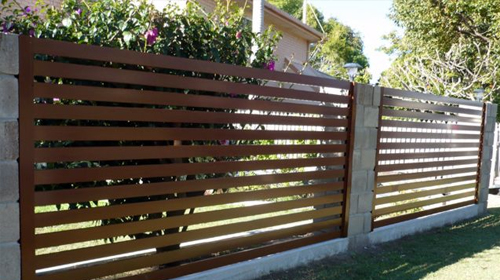Minimalist home design emphasizes simplicity, clean lines, and functionality. When selecting a fence design for your minimalist home, opt for styles that echo these principles. Look for sleek and understated designs that complement the architectural style of your home without overwhelming it. Minimalist fences often feature geometric patterns, horizontal lines, and monochromatic color schemes to create a cohesive and harmonious look.

Prioritizing Durability and Quality
A minimalist home fence should not only be aesthetically pleasing but also durable and long-lasting. Choose high-quality materials such as steel, aluminum, or composite materials that are resistant to rust, corrosion, and wear. These materials require minimal maintenance and upkeep, making them ideal for busy homeowners. Additionally, consider factors such as wind resistance, weather resilience, and warranty coverage when selecting a fence material to ensure optimal performance and longevity.
Balancing Privacy and Openness
While privacy is important, maintaining a sense of openness and connection to the surrounding landscape is equally essential in minimalist home design. Consider fence designs that strike a balance between privacy and transparency, such as slatted panels, perforated metal screens, or frosted glass inserts. These options provide privacy without completely blocking out light and views, creating a sense of spaciousness and continuity between indoor and outdoor spaces.
Incorporating Natural Elements
Incorporating natural elements into your minimalist fence design can add warmth, texture, and visual interest to your outdoor space. Consider using sustainable materials such as bamboo, wood, or stone to create accent panels or decorative features within your fence design. These natural materials create a sense of harmony with the surrounding landscape while adding a touch of organic beauty to your home exterior.
Maximizing Space Efficiency
In minimalist home design, every element serves a purpose and contributes to the overall functionality of the space. When choosing a fence design, prioritize options that maximize space efficiency and minimize visual clutter. Opt for slim profiles, minimal ornamentation, and streamlined construction techniques to create a sleek and unobtrusive fence that enhances rather than detracts from your home’s minimalist aesthetic.
Embracing Technological Innovation
Advancements in technology have opened up a world of possibilities for modern fence design. Consider incorporating innovative features such as motorized gates, integrated lighting, or smart security systems into your minimalist fence design. These technological enhancements not only improve the functionality and convenience of your fence but also add a touch of sophistication and modernity to your home exterior.
Harmonizing with Landscape Design
A minimalist home fence should seamlessly integrate with your overall landscape design scheme to create a cohesive and unified look. Coordinate fence materials, colors, and textures with existing hardscape features such as pathways, patios, and garden beds to create visual continuity throughout your outdoor space. Additionally, consider planting softening elements such as climbing vines, ornamental grasses, or potted plants along the fence line to soften its edges and enhance its aesthetic appeal.
Considering Maintenance Requirements
While minimalist fences are designed to be low-maintenance, it’s important to consider the upkeep requirements of your chosen materials and design elements. Opt for materials that are easy to clean, resistant to staining, and require minimal painting or sealing over time. Additionally, choose fence designs that allow for easy access and repair in case of damage or wear. By selecting low-maintenance options, you can enjoy the beauty and functionality of your minimalist fence for years to come with minimal hassle and effort.
Seeking Professional Advice
Designing the perfect fence for your minimalist home requires careful planning, attention to detail, and expertise. Consider consulting with a professional landscape designer, architect, or fencing contractor to help you navigate the myriad options available and create a custom fence design that meets your specific needs and preferences. A knowledgeable professional can offer valuable insights, recommendations, and guidance to ensure that your minimalist fence not only enhances the beauty of your home but also reflects your unique style and personality.
Conclusion
In conclusion, choosing the right fence design for your minimalist home requires careful consideration of factors such as aesthetics, durability, privacy, space efficiency, and maintenance requirements. By prioritizing clean lines, quality materials, balance between privacy and openness, incorporation of natural elements, space efficiency, technological innovation, harmonization with landscape design, and seeking professional advice, you can create a minimalist fence that enhances the beauty, functionality, and value of your home while reflecting your personal style and preferences. With the right approach and attention to detail, your minimalist fence can become a stylish and integral part of your home exterior for years to come.